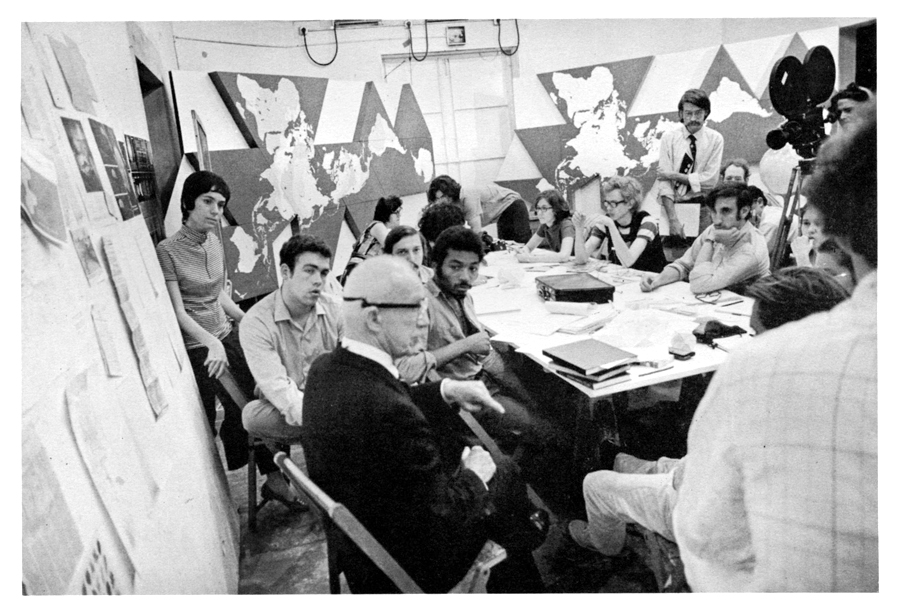DESIGN SCIENCE
By Medard Gabel
“We are called to be the architects of the future, not its victims.”
That quote by Buckminster Fuller encapsulates the purpose of design science. It is a methodology for recognizing, defining, and solving complex real-world problems. It is inspired by the work of Buckminster Fuller and other planners, scientists, and visionaries. It takes a whole systems, global, and anticipatory approach that fosters creative collaboration and synergy in the development of comprehensive, innovative solutions to societal problems.
Very briefly, design science is the comprehensive and anticipatory application of the principles of science to the creative design of solutions to the problems of society. It is a way of changing the world in preferred directions that is based on innovation and thrives on transparency.
The core of this approach to problem solving and planning is both a concern with whole systems—the whole Earth, the entire history of the planet, the global economy, all of technology, and all of humanity; both those living now and those yet to be born—as well as a recognition that everything is implemented locally, and that the “whole” is merely the context for the local. It is the local upon which the success or failure of a particular design solution will thrive or die.
Design science is:
- Comprehensive, in that it starts from the whole system and works back to the special case; it deals with all facets of a problem including the larger system of which the problem is a part; in this sense, design science seeks to build capacity, not just solve problems;
- Anticipatory, in that it seeks to recognize the threats coming down the pike before they arrive full blown on an unsuspecting or ill-prepared society; it deals with the way things are going to be when the solution is going to be implemented, not just the way things are in the present;
- A design strategy, in contradistinction to a political or let’s pass-a-law-and-change-human-behavior approach, seeks to change the larger system of which the specific problem is a part through the introduction of innovative artifacts or policies;
- A science–based methodology that uses the latest advances of science and technology to benefit humanity.
This “comprehensive anticipatory design science” is at least as much a perspective on the problems of the world as it is a methodology for tackling those problems. When applied to contemporary problems, it can lead to strikingly fresh insights and solutions.
Design science is a tool that is based on a global perspective and a systems approach to the problems of the world. It assumes that globalization has made the world an ever more interconnected whole, and any successful problem solving of society’s systemic ills needs to be an approach that is global, comprehensive, visionary, and based on science, not politics, ideology, or wishful thinking. The entire world is now the relevant unit of analysis, not the city, state, or nation. We are onboard, as Buckminster Fuller pointed out, “Spaceship Earth,” and the illogic of 200+ nation state admirals all trying to steer the spaceship in different directions is made clear through this metaphor—as well in Fuller’s more caustic assessment of nation states as “blood clots” in the world’s global metabolism.
The design science process is augmented by vast quantities of statistical information about the state of the world, its resources, human trends, needs, and technology. With the advent of personal computers and the Internet this information became almost universally available—and with it, design science found its perfect compliment. Coupled with the tools of the information age, design science gains the power to reach its potential. The Internet has not leveled the global playing field so much as expanded it, and the good ‘ol boy status quo maintaining political process can now be subverted by a process that brings Thomas Jefferson into the twentieth century.
In Fuller’s words, design science is a process where individuals or teams of people can
“Make the world work, for 100% of humanity, in the shortest possible time, through spontaneous cooperation, without ecological offense or the disadvantage of anyone.”
Making the world work for 100% of humanity reflects Fuller’s global perspective as well as his values. We are not here just to make ourselves rich, famous or top consumer of the day or decade, or here just for the 5% living in our part of the world; we’re here for all of humanity. The “spontaneous cooperation” is instructive in light of the previous discussion. The phase does not read, “Make the world work for 100% of humanity through a central government, or through enforced coercion by a strong military” but through a cooperation that arises from a fundamental transparency of society and its needs. If everyone knows what the situation is, has a clear vision of what should be and what needs to be done, we cooperate to get it done—as we do as a society in times of emergency.
Fuller said,
“I am enthusiastic over humanity’s extraordinary and sometimes very timely ingenuities. If you are in a shipwreck and all the boats are gone, a piano top buoyant enough to keep you afloat that comes along makes a fortuitous life preserver. But this is not to say that the best way to design a life preserver is in the form of a piano top. I think that we are clinging to a great many piano tops in accepting yesterday’s fortuitous contrivings as constituting the only means for solving a given problem.”
Design science is a method for developing the life preserving and enhancing solutions to society’s problems.
For more information and booking: contact us or call 610.506.7176 to schedule a program or register for the next Global Solutions Lab.




